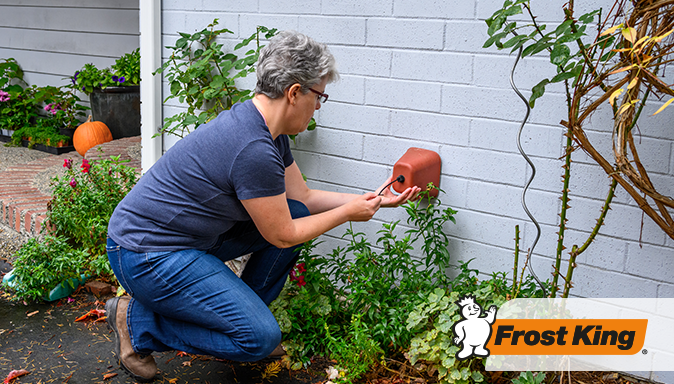With summer in the rear-view mirror and winter coming up fast, crisp, invigorating fall days are the perfect time to roll up your sleeves and knock out some outdoor projects.
Take advantage of mild autumn temperatures to head outside and take care of maintenance projects this month. Grab your tools, gather your materials, and get to work.
1. Garden Clean Up. Give your garden beds some attention before you tuck them in for their long winter’s nap. Clear out annuals and weeds, trim overgrown shrubs and bushes, and divide perennials that have grown too large. (You can plant the divisions elsewhere in your yard or give them away to brighten someone else’s garden.) Add seasonal blooms, like chrysanthemums and asters, to pots and garden beds for a cheery burst of color.
2. Look After Your Lawn: Give your lawn a final cut before the grass goes dormant to prevent snow mold (a cold weather fungus) and other diseases. Aim for a blade length of 2 to 2-1/2 inches to keep it healthy. Seed bald patches and aerate the soil, then apply a fertilizer that’s rich in phosphorous and potassium to strengthen the roots and promote healthy growth in the spring.
3. Update Outdoor Spaces: Before the temperatures drop, give your outdoor spaces a refresh. Seal stone and concrete patios and paint or stain wooden decks and porches so they’re protected from harsh winter weather. Add some outdoor lighting to illuminate walkways and provide some ambient light after the sun goes down, and consider adding a fire pit and outdoor heater so you can extend your outdoor living season by a few weeks. Clean outdoor furniture and store it in a covered location for the winter.
4. Start Composting: Fall leaves are a valuable source of nutrients for your lawn and garden, so instead of raking and bagging them for the landfill, put them to work! Start a compost pile in a well-drained corner of your yard by laying down a layer of twigs or straw, then adding a pile of shredded leaves. Alternate layers of leaves with green material, like grass clippings or kitchen scraps, to create a nitrogen- and carbon-rich balance. Sprinkle the pile with water every time you add another layer to aid with decomposition, and turn the entire pile every few weeks. Over time, the leaves and grass clippings will break down into a nutrient-rich compost that you can use to enrich next year’s garden beds. If that’s too much work, you can simply leave the leaves and let them break down into valuable nutrients for your lawn over the winter.
5. Focus on Weatherproofing: Examine your home’s exterior for any gaps and cracks in the foundation or around doors and windows, and seal them with weatherstripping to prevent drafts and air leaks that will make your house feel cold in the winter. Watch this video to pick the right weatherstripping for your job:
6. Time to Winterize: Clean and store your garden tools so they’ll be in good shape when spring rolls around. Rinse dirt and mud from your tools, then dry them thoroughly and store them in a sand-filled bucket to prevent rust from forming over the winter.
Drain garden hoses, then coil them into a circle and hang in your garage or shed. Once the hoses are stored, winterize outdoor spigots so the pipes don’t freeze and burst over the winter by shutting off the valve for the water line to the spigot (look for it in the basement or crawlspace) then turning on the outdoor spigot to drain any water that’s in the pipe.
Once the pipe is drained, install our Foam Faucet Cover—recently rated the Best Overall Outdoor Faucet Cover of 2023 by The Spruce!—over the spigot to add an extra layer of insulation during harsh winter weather. Watch this video for step-by-step instructions on how to install it:
